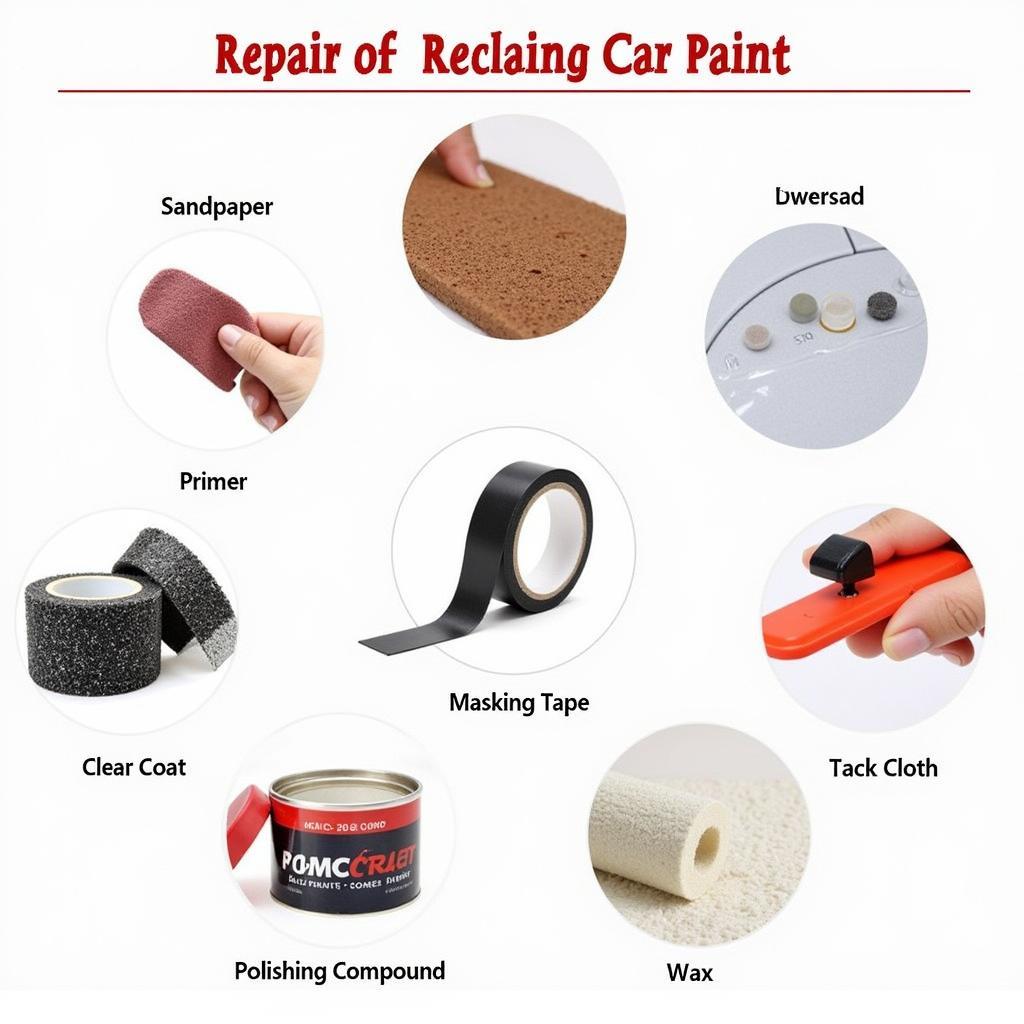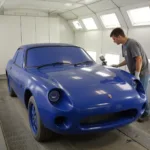Peeling car paint is a common problem that can be caused by a variety of factors, from sun exposure and harsh weather to improper car washing techniques. Knowing how to repair peeling paint on a car can save you a significant amount of money compared to professional repainting. This guide will provide a comprehensive overview of the process, offering DIY solutions and professional tips to restore your car’s finish. We’ll cover everything from identifying the cause of the peeling to prepping the surface and applying the new paint.
Addressing peeling paint is crucial not only for aesthetics but also for protecting the underlying metal from rust and corrosion. Ignoring this issue will only worsen it over time, leading to more costly repairs down the road. peeling car paint repair. This article will equip you with the knowledge and steps necessary to tackle this common car problem.
Identifying the Cause of Peeling Car Paint
Before starting any repair, it’s essential to determine why the paint is peeling. This will help you address the root cause and prevent the issue from recurring. Common culprits include:
- UV damage: Prolonged exposure to sunlight can break down the paint’s chemical bonds, causing it to become brittle and peel.
- Moisture: Water trapped under the paint can lead to blistering and peeling, especially in areas with poor drainage.
- Poor surface preparation: If the surface wasn’t properly cleaned or primed before the initial paint job, adhesion issues can arise, resulting in peeling.
- Impact damage: Stone chips, minor accidents, and even bird droppings can create weak points where paint can start to lift.
- Low-quality paint: Cheap or improperly mixed paint may not adhere well to the car’s surface.
Gathering Your Materials
Once you’ve identified the cause, gather the necessary materials:
- Sandpaper (various grits)
- Primer
- Automotive paint (matching your car’s color)
- Clear coat
- Masking tape and paper
- Tack cloth
- Rubbing compound
- Polishing compound
- Wax
Having the right tools and materials on hand will streamline the repair process. repair peeling car paint. Make sure you select high-quality products for the best results.
Preparing the Affected Area
Proper surface preparation is key to a successful repair.
- Clean the area: Thoroughly wash the affected area with soap and water, then dry it completely.
- Sanding: Use coarse sandpaper to remove the peeling paint, gradually switching to finer grits to smooth the surface. Feather the edges of the sanded area to blend it with the surrounding paint.
- Priming: Apply a thin, even coat of primer to the sanded area. This will promote adhesion of the new paint.
- Masking: Carefully mask off the surrounding areas to protect them from overspray.
Applying the New Paint
Now you’re ready to apply the new paint:
- Apply thin coats: Apply several thin coats of automotive paint, allowing each coat to dry before applying the next.
- Clear coat: Once the paint is dry, apply a few coats of clear coat to protect it and give it a glossy finish.
Finishing Touches
After the clear coat has dried:
- Wet sanding: Use fine-grit sandpaper and water to smooth out any imperfections in the clear coat.
- Polishing: Use rubbing compound and then polishing compound to restore the shine.
- Waxing: Apply a coat of wax to protect the new paint.
Why is my car paint peeling?
Several factors can contribute to peeling car paint, including sun exposure, moisture, improper surface preparation before painting, impact damage, and low-quality paint.
How can I prevent car paint from peeling?
Regular washing and waxing, parking in shaded areas, and addressing minor paint chips promptly can help prevent peeling.
Can I repair peeling car paint myself?
Yes, with the right tools and patience, you can repair peeling car paint yourself. However, for large or complex areas, professional help is recommended.
Expert Insights
John Miller, Automotive Paint Specialist: “The key to a long-lasting paint job is proper surface preparation. Taking the time to properly clean and sand the area will ensure that the new paint adheres correctly and doesn’t peel prematurely.”
Maria Sanchez, Auto Body Repair Technician: “Choosing high-quality paint and clear coat is crucial for a durable and professional-looking finish. Investing in good products will save you time and money in the long run.” paint peeling off car repair Remember, quality materials are essential.
Conclusion
Repairing peeling paint on your car is a manageable DIY project that can significantly improve its appearance and protect it from further damage. By following the steps outlined in this guide, how to repair peeling paint on a car becomes a much less daunting task. Remember to address the root cause of the peeling to prevent it from reoccurring. If you are unsure about any step, consulting a professional is always a good idea. car paint peeling repair san diego.
FAQ
- What type of primer should I use for car paint repair?
- How long should I wait between coats of paint?
- Can I use spray paint to repair peeling car paint?
- What grit sandpaper should I use for wet sanding?
- How often should I wax my car?
- How to choose the right paint color for my car?
- What is the best way to remove rust before painting?
Need more help? Check out our other articles on how to repair peeling paint on a car.
For immediate assistance, contact us via WhatsApp: +1(641)206-8880, or Email: [email protected]. Our customer service team is available 24/7.



